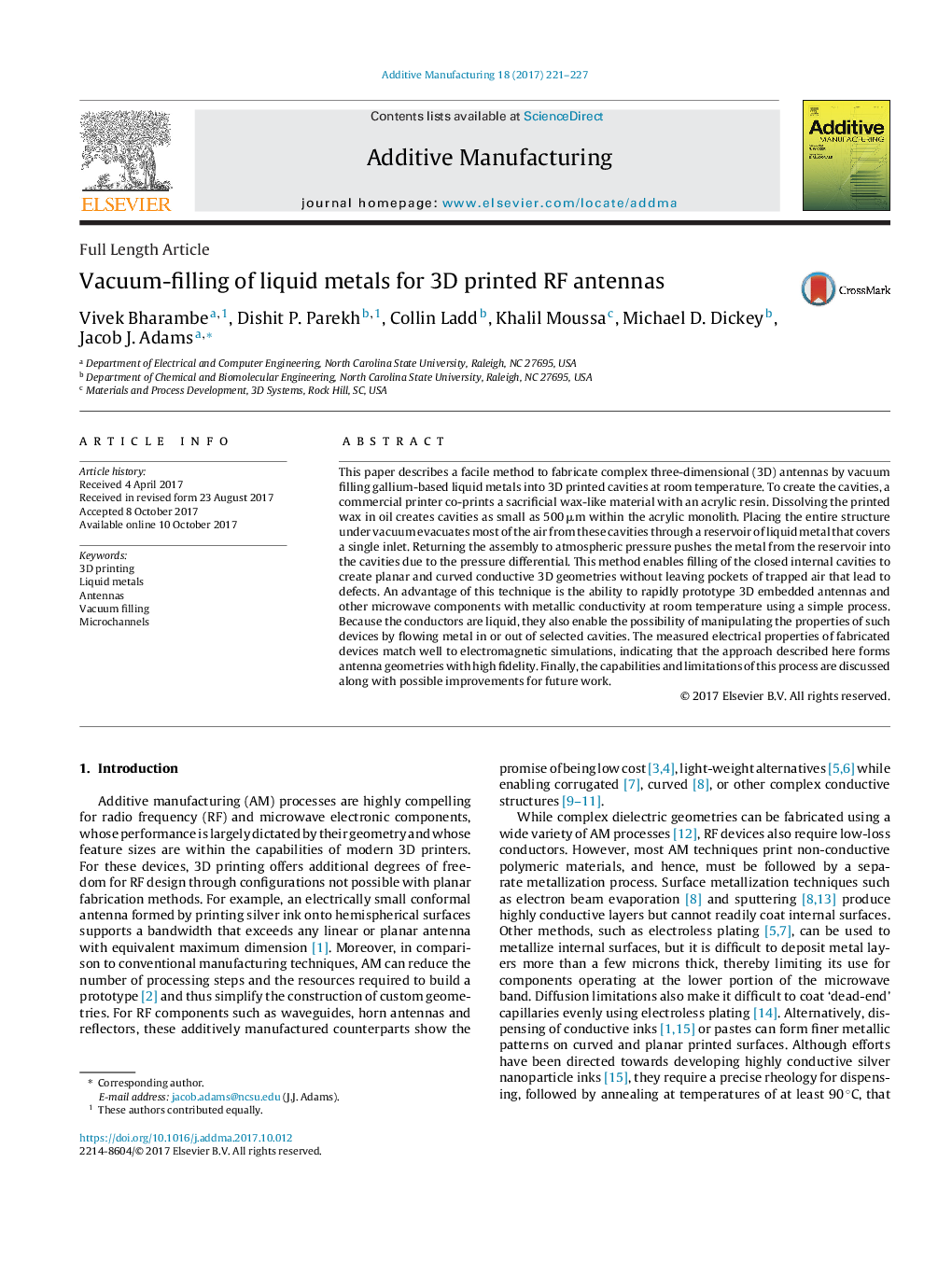| Article ID | Journal | Published Year | Pages | File Type |
|---|---|---|---|---|
| 5020014 | Additive Manufacturing | 2017 | 7 Pages |
Abstract
This paper describes a facile method to fabricate complex three-dimensional (3D) antennas by vacuum filling gallium-based liquid metals into 3D printed cavities at room temperature. To create the cavities, a commercial printer co-prints a sacrificial wax-like material with an acrylic resin. Dissolving the printed wax in oil creates cavities as small as 500 μm within the acrylic monolith. Placing the entire structure under vacuum evacuates most of the air from these cavities through a reservoir of liquid metal that covers a single inlet. Returning the assembly to atmospheric pressure pushes the metal from the reservoir into the cavities due to the pressure differential. This method enables filling of the closed internal cavities to create planar and curved conductive 3D geometries without leaving pockets of trapped air that lead to defects. An advantage of this technique is the ability to rapidly prototype 3D embedded antennas and other microwave components with metallic conductivity at room temperature using a simple process. Because the conductors are liquid, they also enable the possibility of manipulating the properties of such devices by flowing metal in or out of selected cavities. The measured electrical properties of fabricated devices match well to electromagnetic simulations, indicating that the approach described here forms antenna geometries with high fidelity. Finally, the capabilities and limitations of this process are discussed along with possible improvements for future work.
Related Topics
Physical Sciences and Engineering
Engineering
Industrial and Manufacturing Engineering
Authors
Vivek Bharambe, Dishit P. Parekh, Collin Ladd, Khalil Moussa, Michael D. Dickey, Jacob J. Adams,
